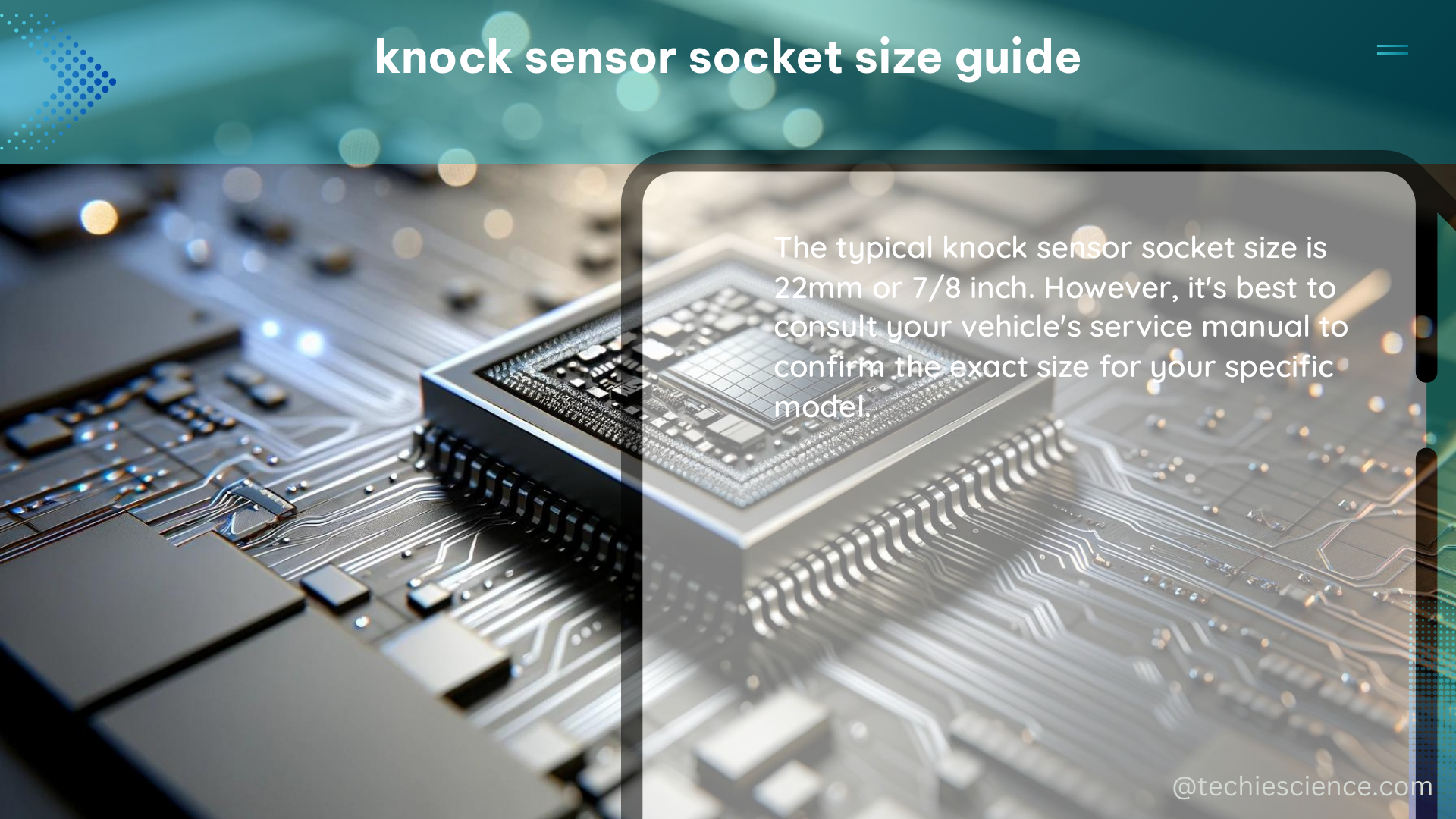The knock sensor, a critical component in modern engines, plays a vital role in monitoring combustion and detecting any abnormal knocking that could potentially damage the engine. Accessing and replacing this sensor requires the use of a specialized socket, and understanding the precise socket size is crucial for a successful repair. This comprehensive guide delves into the intricate details of the knock sensor socket size, providing a valuable resource for automotive enthusiasts and professionals alike.
Understanding the Knock Sensor
The knock sensor, also known as a knock detector, is an electronic device that is typically located in the engine block. It is responsible for monitoring the engine’s combustion process and detecting any abnormal combustion, or “knocking,” which can lead to severe engine damage if left unchecked. The knock sensor is connected to the engine control unit (ECU) via a wiring harness, allowing the ECU to make adjustments to the engine’s ignition timing and fuel delivery to prevent knocking.
Knock Sensor Socket Size Measurements

Socket Size
The socket size for a knock sensor is typically 14mm, although this may vary depending on the make and model of the vehicle. It is essential to consult the vehicle’s service manual to confirm the correct socket size, as using the wrong size can lead to damage to the sensor or the surrounding components.
Thread Size and Pitch
In addition to the socket size, the thread size and pitch of the knock sensor are critical measurements. This information is typically provided in the service manual and is essential for ensuring that the replacement sensor is compatible with the engine. The thread size and pitch may vary depending on the make and model of the vehicle, so it is important to consult the service manual before attempting to replace the knock sensor.
Torque Specifications
The torque specifications for installing the knock sensor are also crucial. Over-tightening the sensor can cause damage to the sensor or the engine, while under-tightening can result in poor sensor performance or even sensor failure. The torque specifications for installing the knock sensor are typically provided in the service manual and should be followed carefully to ensure proper sensor installation.
Technical Specifications for Knock Sensor Sockets
Material and Design
The knock sensor socket should be made from high-quality materials to ensure durability and longevity. The socket should also be designed to fit securely over the knock sensor, with a rubber or plastic insert to prevent damage to the sensor.
Compatibility
Another critical technical specification is the socket’s compatibility with various makes and models of vehicles. Some sockets are designed to fit a wide range of vehicles, while others are specific to certain makes and models. It is essential to choose a socket that is compatible with the vehicle in question to ensure proper fit and function.
DIY Guide for Knock Sensor Replacement
Consulting the Service Manual
Before attempting to replace the knock sensor, it is essential to consult the vehicle’s service manual to confirm the correct socket size, thread size and pitch, and torque specifications for the knock sensor.
Removing the Old Sensor
When removing the old knock sensor, it is crucial to use caution to avoid damaging the sensor or the surrounding components. The sensor should be loosened gradually, using a torque wrench to ensure that the correct torque specifications are followed.
Installing the New Sensor
Once the old sensor has been removed, the new sensor can be installed using the same process, being careful to tighten the sensor to the correct torque specifications.
Conclusion
The knock sensor socket size guide is a critical aspect of automotive repair and maintenance, particularly for high-performance engines. By understanding the precise measurements and technical specifications, and following the correct procedures for replacement, automotive enthusiasts and professionals can ensure that the knock sensor is properly installed and functioning, ultimately protecting the engine from potential damage and ensuring optimal performance.
References:
– Automotive training.pdf – Providence Public Schools
– Tuning Guide with XMap Software – XEDE – YUMPU
– TRITON-D8 User Manual – Snap-on
– Farmingdale State College – Courses
– Owners Manual – UD Trucks

The lambdageeks.com Core SME Team is a group of experienced subject matter experts from diverse scientific and technical fields including Physics, Chemistry, Technology,Electronics & Electrical Engineering, Automotive, Mechanical Engineering. Our team collaborates to create high-quality, well-researched articles on a wide range of science and technology topics for the lambdageeks.com website.
All Our Senior SME are having more than 7 Years of experience in the respective fields . They are either Working Industry Professionals or assocaited With different Universities. Refer Our Authors Page to get to know About our Core SMEs.